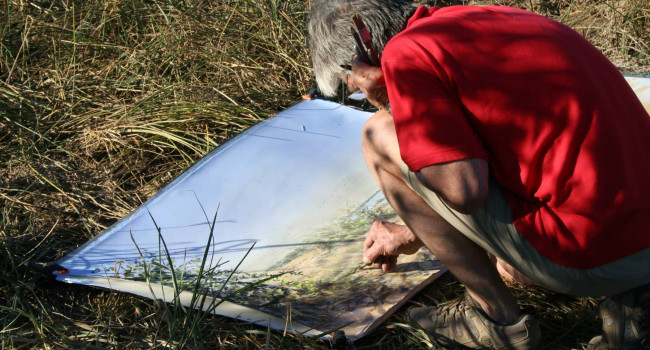
BirdTrack migration blog (16th-22nd September)
Scott’s role includes the day-to-day running of BirdTrack: updating the application, assisting county recorders by checking records and corresponding with observers.
Relates to projects
Waders were especially evident: BirdTrack reporting rates of Dunlin, Knot, and particularly Little Stint, Curlew Sandpiper, and Ruff were significantly higher than would be normally expected. This was no doubt a result of light winds from the north and east aiding their southward journey. Again RSPB Frampton Marsh held the biggest count of Curlew Sandpiper with 122+ reported on the 12th. Pectoral Sandpipers, a scarce vagrant from North America, were also well-reported; given the wind directions over the past week, these birds probably came from the parts of this species' range in eastern Siberia rather than America.
The sea also provided some interest, with a few Long-tailed Skuas mixed in with commoner Arctic Skuas. A steady passage of terns was reported with Common, Sandwich and Black Terns all seen in numbers above the historical average. Red-throated Diver reports increased as numbers build ahead of the coming winter; at this time of year, reports include a mix of juveniles and adult birds in both summer and winter plumage, and at various intermediate stages of moult. These can often be confused with Black-throated Divers.
The first trickle of Pink-footed Geese began to appear at their traditional wintering areas with flocks seen in Norfolk, Scotland, and several places in between. It is well worth listening out for them at night.

Over 10,000 Meadow Pipits, a Citrine Wagtail and Pallid Harrier - autumn migration at its best.
The weekend 9-12 September saw the annual migration festival underway at Spurn Point, East Yorkshire, with the aim of drawing migration enthusiasts together to enjoy the spectacle of autumn migration.
With an easterly airflow forecast, anticipation was high, and there was evidence of drift migrants right from the start. Redstarts, Pied Flycatchers and Whinchats were all to be found, along with a small passage of Yellow and Grey Wagtails. All these were grounded migrants, birds that had been on the move but were now resting up ahead of the next leg of their journey, stopped by the weather conditions – light rain and increasing winds.
It wasn’t until Sunday 12 September that the awesome spectacle of visible migration was seen. The conditions were clear and the wind had veered to a light south westerly. The time of the year and the weather were perfect for a movement of Meadow Pipits, and during the day over 10,000 were seen flying south over Spurn towards their wintering range. For Meadow Pipits, this extends from lowland Britain southwards to Morocco, with the latter being the favoured area.
It is impossible to know where these birds originated. Given that around 2.4 million pairs breed in the UK, all of the birds on the move during the 12 September could have been leaving northern Britain. However, a supporting cast of Pallid Harrier and Citrine Wagtail at Spurn and a Red-breasted Flycatcher at Flamborough Head indicates that at least some, if not most of these Meadow Pipits came across the North Sea from Scandinavia.

Looking ahead
The weekend and the early part of next week look to be dominated by northerly winds as a high-pressure system sits off the northwest coast of Scotland. The resulting winds from the arctic and Iceland could bring in greater numbers of Icelandic-breeding Pink-footed Geese as well as other wildfowl like Wigeon, Shoveler, Pintail, and Teal. These northerly winds could also be good for seawatching: sightings of Skuas, Sooty Shearwater, Sabine’s Gull, and Leach’s Petrel are all possible given the conditions and waders, wildfowl, and divers will all be on the move. Look out for Dunlin, Knot, Wigeon, Teal, Brent Goose, and more Red-throated Divers.
During the week high pressure will continue to govern migration, with another high-pressure system sitting across much of Britain and Ireland. This will give us settled conditions and light winds in many areas. These lighter winds that are really just swirling around and not really coming from far-flung locations will certainly put the brakes on migration compared to the past week. Some eastern locations may get a scattering of drift migrants from the continent, such as Redstart, Whinchat, and Wryneck. No doubt there will be the occasional scarcer species mixed in such as Red-breasted Flycatcher, Arctic Warbler, or Rustic Bunting.
Launching the new BirdTrack App
A fresh look and new features - the new app is the perfect companion when out birdwatching and enables you to easily keep track of the birds you see.
Find out more








Share this page